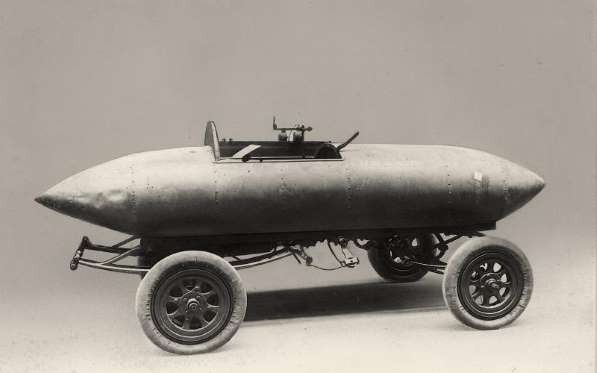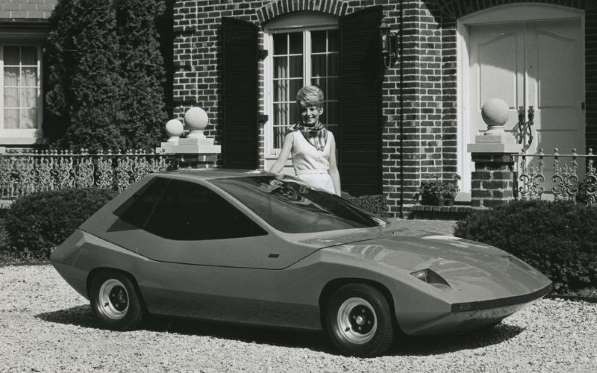Throughout the history of the automotive industry, numerous major manufacturers and electric vehicle enthusiasts have attempted to revolutionize the car manufacturing sector. While these efforts have met with limited success, here is a list of 10 unique electric cars that have challenged the dominance of gasoline-powered vehicles.
1. La Jamais Contente (1899)

La Jamais Contente holds a significant place in the history of the electric vehicle manufacturing industry as it was the first electric car capable of breaking the speed barrier of 100km/h. This car featured a dual power 25kW engine from Postel-Vinay, which was housed in an aluminum frame. In 1899, it set a world record for land speed, reaching a top speed of 65.79 mph (105.87 km/h). Unfortunately, this record was short-lived as it was later broken by a steam-powered car in 1902.
2. Wilson (1935)

Established in Leicester in 1934, Partridge, Wilson & Co was primarily known for manufacturing milk vans. However, in 1935, the company introduced a fully electric car to the market. The elegant design was created by renowned designer Arthur Mulliner (famous for his design of the Rolls-Royce Phantom Classic), which helped overcome user resistance to the squealing noise produced by the car’s 64V motor. At that time, this model was twice as expensive as the Morris Ten. The car had a range of approximately 65 km, a maximum speed of about 43 km/h, and required half a day for a full charge. Despite these limitations, it became the most successful electric car in the UK from 1918 to 1939, with a total of 40 cars sold.
3. Henney Kilowatt (1959)

The Henney Kilowatt was a pioneer in electrifying existing conventional models and was based on the Renault Dauphine. This idea originated from the National Electric Companies Association in the US and was implemented by Henney, a funeral car manufacturer in New York. Early prototypes were equipped with a 36V motor and an 18-cell battery, but the car could only travel about 65 km on a single charge. Later, the power supply was doubled to 72V, enabling the car to cover approximately 100 km with a top speed of nearly 100 km/h. Out of the 47 units produced, 32 were sold to civilian electric utility companies, while the remaining cars were sold at a high price of $3,600 at that time. Surprisingly, these cars were still being sold in 1979.
4. Compton-Leyland (1971)

In 1971, British Leyland, foreseeing the oil crisis and its economic implications, unveiled its electric car. The car used lead-acid batteries sourced from golf carts, and both the design and interior were inspired by the Mini. It had typical specifications for its time, with a maximum speed of approximately 50 km/h, a charging time of 9 hours, and a range of around 65 km per charge. According to feedback from fans, the legendary designer Giovanni Michelotti designed the car’s plastic chassis, and the wheel design was later used in other Compton-Leyland models.
5. McKee Sundancer (1974)

In 1974, the McKee manufacturer from Illinois created a sleek car model to demonstrate the potential of modern battery technology. Bob McKee installed a set of 6V batteries used in golf carts beneath the car’s chassis. This battery pack could be easily swapped with a fully charged one. The car featured a low profile design (only 1m in height) to enhance aerodynamics, and the convertible top followed the styling trends of the 70s. The Sundancer could accelerate from 0 to 50 km/h in 9.5 seconds and had a range of up to 160 km on a single charge. However, despite being introduced during the oil crisis of the 1980s, this car model failed to gain substantial popularity, with Motor Trend magazine deeming it too small for city traffic.
6. Lucas Electric Taxi (1975)

The Lucas Electric Taxicab, manufactured in 1975, received mixed reviews and feedback from taxi drivers in London. Many taxi drivers, who often operated as shared owners of the vehicles, were not satisfied with this model’s performance as a daily car. However, the car gained attention for its compact size, fashionable design by Ogle Design, and a top speed of up to 90 km/h. Its limited range of approximately 160 km per charge was the main drawback for taxi drivers.
7. EAC Silver Volt (1980)

EAC, one of the pioneers in the British electric vehicle industry, created the sleek Silver Volt. Conceived by Mr. Jon Samuel, the car utilized a V6 engine powered by a 144V battery system. To improve range and performance, EAC incorporated a diesel-powered generator to extend the car’s maximum achievable distance and support steering, braking, and air conditioning. The regenerative braking and self-charging technology used in this car served as a precursor to later Toyota Prius models. The Silver Volt had a range of 100-160 km on a single charge, an average speed of about 90 km/h in urban areas, and a maximum speed of 112 km/h. Despite Mr. Jon’s promise that the Silver Volt would provide a driving experience akin to sitting in a Rolls-Royce, consumers found the car’s price of $14,000 at that time hard to justify.
8. Pohlmann EL (1981)

In 1981, German car pushchair manufacturer Pohlmann incorporated the famous gull-wing doors from the Mercedes 300SL into its electric car model, Pohlmann EL. The car boasted a 40V power supply directly transmitted to the engines attached to the rear wheels. RWE, an energy provider, sponsored the entire project until 1988.
9. General Motors EV1 (1996)

Introduced in 1996, the EV1 was the first fully electric car produced by a mainstream car manufacturer in the US. Early models utilized lead-acid batteries and had a range of 120 km on a single charge. In 1999, thanks to advancements in nickel battery technology and regenerative braking, the car’s range doubled. Customers could lease the EV1 for $549 per month and were impressed with its sleek design, smooth operation, air conditioning, and heat-resistant films. The EV1 also stood out as one of the most aerodynamic cars on the market.
10. I.D.E.A Kaz (2001)

Designed by Professor Hiroshi Shimizu and his research team at Keio University in Japan, the I.D.E.A Kaz limousine aimed to showcase the excellence and future potential of lithium-ion batteries. Starting in 1996, Shimizu developed the concept, and the Keio Advanced Zero-Emissions car debuted at the 2001 Geneva Motor Show with a price tag of up to $4 million. Featuring an 8-port engine delivering a torque of up to 34kg per port, the car could accelerate to 100 km/h in 7 seconds. Power was generated by 84 lithium-ion batteries placed under the car and supplied through an intelligent transformer. A full charge allowed the car to travel up to 300 km. Manufactured by I.D.E.A in Italy, the Kaz achieved an astonishing speed of 312 km/h during a test run in October 2002.
Source: Classic and Sports Car































![[CAR REVIEW] Rolls-Royce Spectre: A Symphony of Luxury](https://vnauto.net/wp-content/uploads/2023/10/xehay-rrspectre-30082023-1-150x150.jpg)










